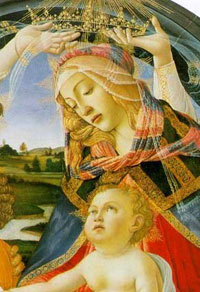| |
||||||||||||||
 |
 |
|
 |
|
 |
|
 |
|
 |
 |
||||
| |
|
 |
 |
 |
||||||||||
 |
|
|
|
|
||||||||||
|
|
|
|||||||||||||
|
|
|
|||||||||||||
| |
|
|
|
|
|
|
|
|
|
|
|
|
|
|
Studio Tradition: The Training of an Artist |
|
Young male artists were apprenticed to master painters from Medieval times through the Victorian era. Because the studios often had nude models for anatomical drawing and painting-- male nudes as well as female, it was considered unseemly for women to be present in the studio. Under this pretext, women were banned from a formal training in the arts with a very few exceptions. Mimesis was the basic method of teaching. Students would mimic the style of the master, even help him with parts of his own works when they reached an advanced level of mastery. When an artist could paint in the style of his master, he was graduated, and could establish a studio of his own. Often work from the Renaissance through the 18th century can only be attributed to the school of a particular master, so diligently did his students mirror his style, and so deep was this allegiance to collaboration. Well before the Renaissance, an established series of biblical scenes had already become accepted and requested by patrons: The madonna and child, the Annunciation, and scenes from the Passion Cycle: Christ upon the cross, the deposition of Christ, the lamentation and one of it's most enduring versions, the Pietà. Two things happened: 1)
These subjects were burned into our minds as generation after generation
of painter painted the same subjects, often in the same or similar poses,
student imitating Master. 2) Many of these subjects were assiduously copied in the same or similar style by master then student and so on through the generations. And yet from the Renaissance on, European society began to consider Originality and Enterprise as the highest forms of personal achievement. Art making became less and less collaborative, and more an individual endeavor. Because of its very nature, a purely mimetic tradition was doomed to failure. Many a prized student has faded into anonymity because of his ability to mimic their master's style and grace without adding his stylistic voice to the tradition of painting and sculpting. It is the deviants we remember, those who broke with tradition, who embraced innovation or extreme. |

 |
| In the paintings of Botticelli, we clearly see both the aesthetic and deliberate contoured painting style of his master, Fra Filipo Lippi. This is particularly evident when one compares two versions of the Madonna and Child: Lippi's version from 1440-45 (left), and Boticelli's Madonna of the Magnificat, c.1482 (right). Though the student owes much to the master, Boticelli's innovation in composition and refined treatment of color and light put him into favor with patrons, so much so that his fame superceded that of his teacher even within his own lifetime.
|
__________________________________________________________ Pietà History | Studio Tradition | Artists & Works | Research | Sitemap |